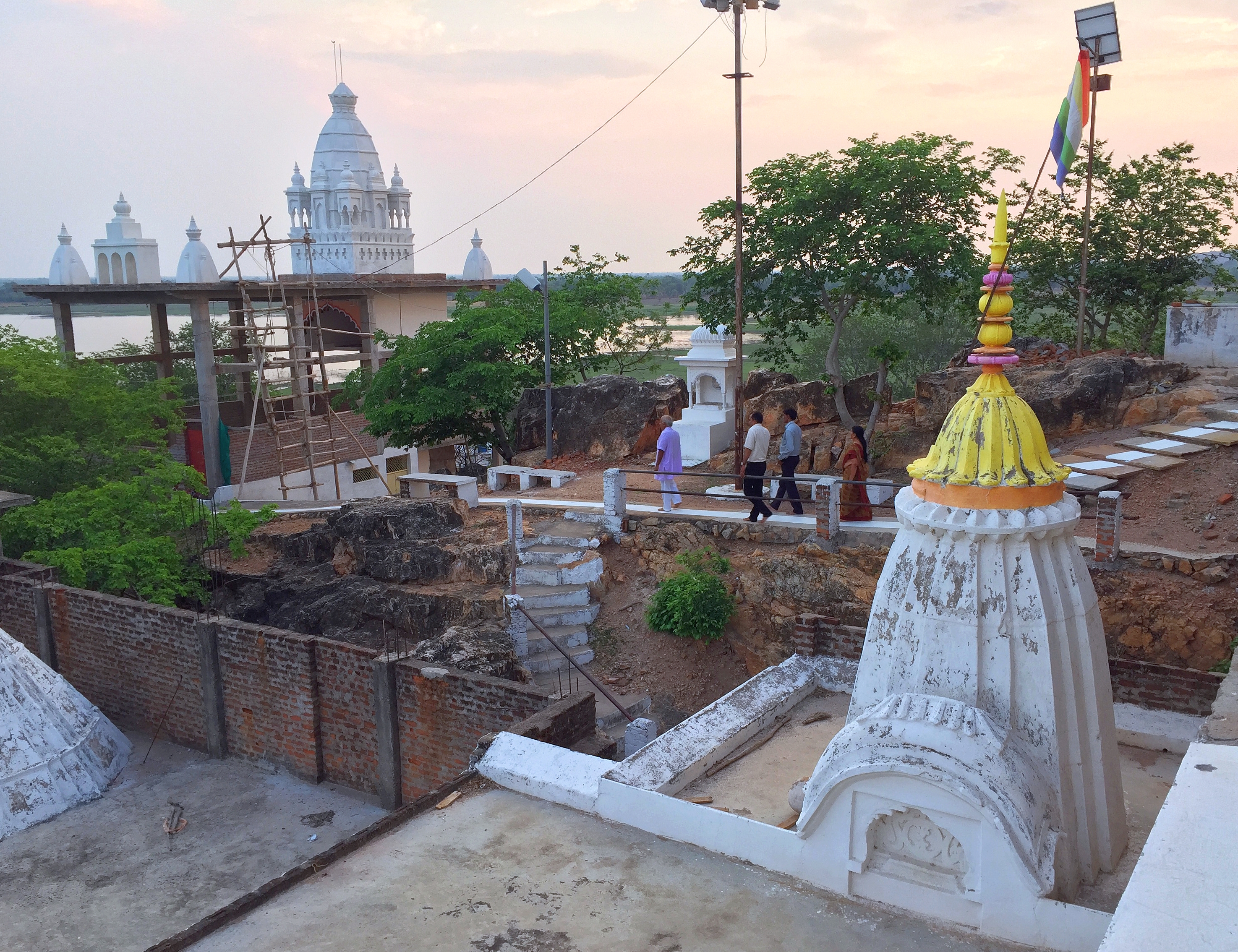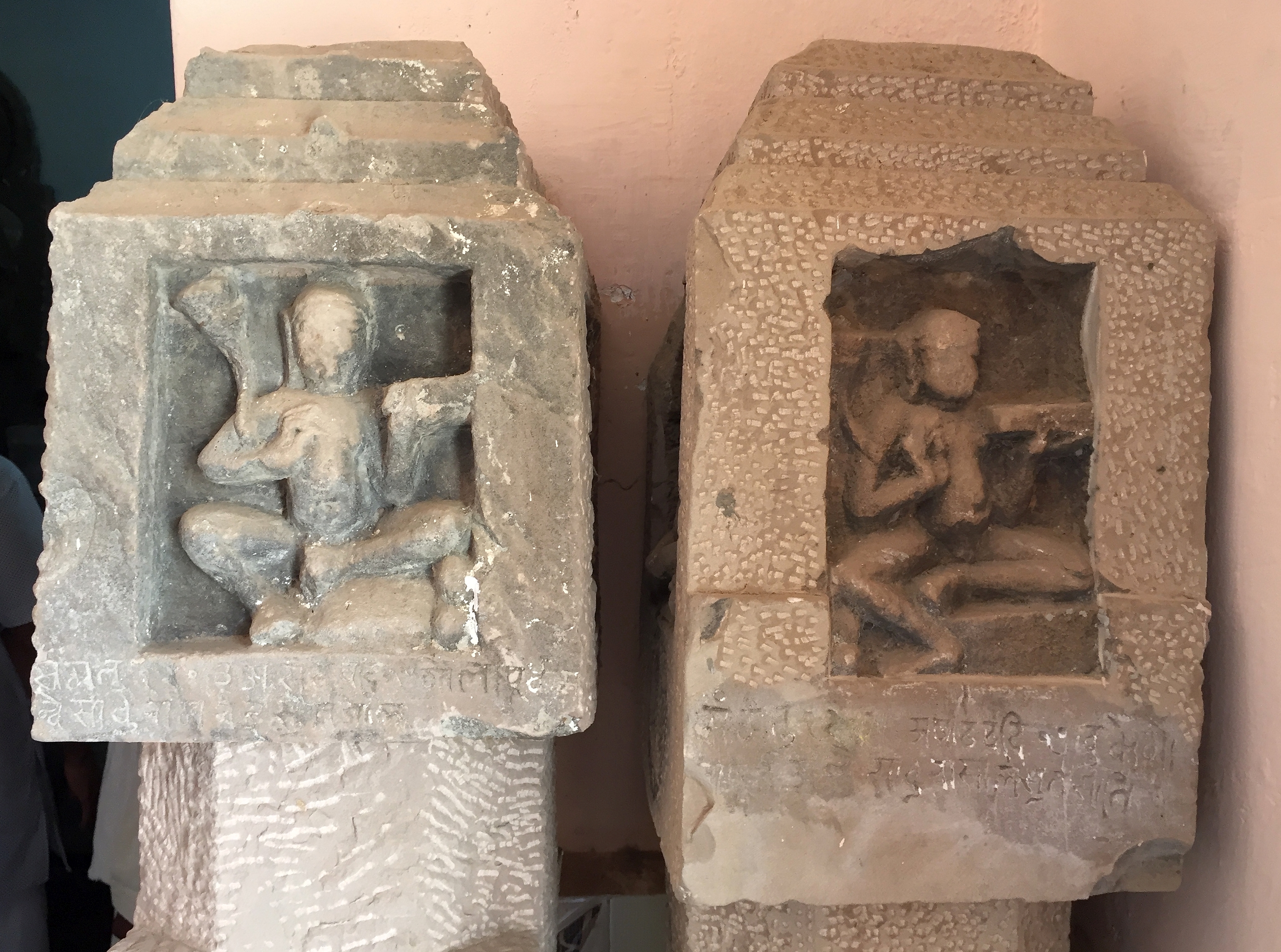|
Badagaon
Badagaon Dhasan is a town and a Nagar Parishad (City Council) in Tikamgarh district in the state of Madhya Pradesh, India. Demographics India census, Badagaon had a population of 18,584. Males constitute 52% of the population and females 48%. Badagaon has a literacy rate of 84%, much higher than the national average of 65%, with 89% of the males and 71% of females literate. 60% of the population is under 25 years of age. Education Most primary and secondary schools in Badagaon are affiliated with the state level M.P. Board. Among the main schools are: * Amar Shaheed Narayan Das Khare Government Higher Secondary School * Government Girls High School * Government Primary School * Mata Beti Bai Higher secondary School * Vardhaman val vidhya niketan higher secondary school *Kids Care Convent School *Manshapurna public high school Badagaon is also famous for its highly educated people who have made it to civil services and top positions in different sectors. The intellect and guts ... [...More Info...] [...Related Items...] OR: [Wikipedia] [Google] [Baidu] |
Navagarh
Navagarh is a Jain Tirth (pilgrimage site for Jainism) in India. It is located at the Nabai village near Sojna in central India in Uttar Pradesh, just across the border from Madhya Pradesh. It is 65 km east from Lalitpur and 110 km north from Sagar. This ancient cite was excavated in 1959. It is the only tirth in India where the main deity is the ancient image of Lord Aranatha, preserved in the ancient underground chamber. Navagarh Tirth Navagarh is a place full of natural attractive beauty being surrounded by rocky wilderness. It is famous for the exceptionally crafted life size image of Lord (Aranatha) in standing (Kayotsarga) posture. It is in the Chandela style and finely polished. It does not have an inscription, but a fragment of a Shantinatha image from the same chamber has the date samvat 1202. There are nearby prehistoric rock shelters where Jain monks used to meditate. Some of them contain prehistoric drawings. Discovery and development In 1940s the site ... [...More Info...] [...Related Items...] OR: [Wikipedia] [Google] [Baidu] |
States And Territories Of India
India is a federal union comprising 28 states and 8 union territories, with a total of 36 entities. The states and union territories are further subdivided into districts and smaller administrative divisions. History Pre-independence The Indian subcontinent has been ruled by many different ethnic groups throughout its history, each instituting their own policies of administrative division in the region. The British Raj mostly retained the administrative structure of the preceding Mughal Empire. India was divided into provinces (also called Presidencies), directly governed by the British, and princely states, which were nominally controlled by a local prince or raja loyal to the British Empire, which held ''de facto'' sovereignty ( suzerainty) over the princely states. 1947–1950 Between 1947 and 1950 the territories of the princely states were politically integrated into the Indian union. Most were merged into existing provinces; others were organised into ... [...More Info...] [...Related Items...] OR: [Wikipedia] [Google] [Baidu] |
Kayotsarga
Kayotsarga ( , pka, काउस्सग्ग ) is a yogic posture which is an important part of the Jain meditation. It literally means "dismissing the body". A tirthankara is represented either seated in yoga posture or standing in the kayotsarga posture. ''Kayotsarga'' means "to give up one's physical comfort and body movements", thus staying steady, either in a standing or other posture, and concentrating upon the true nature of the soul. It is one of the six essentials (''avasyaka'') of a Jain ascetic and one of the 28 primary attributes of a Digambara monk Twenty-one of the tīrthankaras of Jainism are said to have attained ''moksha'' in the kayotsarga “standing meditation” posture. An example of unflinching standing meditation is that of '' Arihant Bahubali'' who is said to have stood in kayotsarga for a year. Sāmayika In performing ''sāmayika'' (daily meditation), the ''śrāvaka'' has to stand facing north or east and bow to the '' Pancha-Parameṣṭhi''. ... [...More Info...] [...Related Items...] OR: [Wikipedia] [Google] [Baidu] |
Census
A census is the procedure of systematically acquiring, recording and calculating information about the members of a given population. This term is used mostly in connection with national population and housing censuses; other common censuses include censuses of agriculture, traditional culture, business, supplies, and traffic censuses. The United Nations (UN) defines the essential features of population and housing censuses as "individual enumeration, universality within a defined territory, simultaneity and defined periodicity", and recommends that population censuses be taken at least every ten years. UN recommendations also cover census topics to be collected, official definitions, classifications and other useful information to co-ordinate international practices. The UN's Food and Agriculture Organization (FAO), in turn, defines the census of agriculture as "a statistical operation for collecting, processing and disseminating data on the structure of agriculture, covering th ... [...More Info...] [...Related Items...] OR: [Wikipedia] [Google] [Baidu] |
India
India, officially the Republic of India (Hindi: ), is a country in South Asia. It is the seventh-largest country by area, the second-most populous country, and the most populous democracy in the world. Bounded by the Indian Ocean on the south, the Arabian Sea on the southwest, and the Bay of Bengal on the southeast, it shares land borders with Pakistan to the west; China, Nepal, and Bhutan to the north; and Bangladesh and Myanmar to the east. In the Indian Ocean, India is in the vicinity of Sri Lanka and the Maldives; its Andaman and Nicobar Islands share a maritime border with Thailand, Myanmar, and Indonesia. Modern humans arrived on the Indian subcontinent from Africa no later than 55,000 years ago., "Y-Chromosome and Mt-DNA data support the colonization of South Asia by modern humans originating in Africa. ... Coalescence dates for most non-European populations average to between 73–55 ka.", "Modern human beings—''Homo sapiens''—originated in Africa. Then, int ... [...More Info...] [...Related Items...] OR: [Wikipedia] [Google] [Baidu] |
Female
Female (Venus symbol, symbol: ♀) is the sex of an organism that produces the large non-motile ovum, ova (egg cells), the type of gamete (sex cell) that fuses with the Sperm, male gamete during sexual reproduction. A female has larger gametes than a male. Females and males are results of the anisogamous reproduction system, wherein gametes are of different sizes, unlike isogamy where they are the same size. The exact mechanism of female gamete evolution remains unknown. In species that have males and females, Sex-determination system, sex-determination may be based on either sex chromosomes, or environmental conditions. Most female mammals, including female humans, have two X chromosomes. Female characteristics vary between different species with some species having pronounced Secondary sex characteristic, secondary female sex characteristics, such as the presence of pronounced mammary glands in mammals. In humans, the word ''female'' can also be used to refer to gender i ... [...More Info...] [...Related Items...] OR: [Wikipedia] [Google] [Baidu] |
Madhya Pradesh
Madhya Pradesh (, ; meaning 'central province') is a state in central India. Its capital is Bhopal, and the largest city is Indore, with Jabalpur, Ujjain, Gwalior, Sagar, and Rewa being the other major cities. Madhya Pradesh is the second largest Indian state by area and the fifth largest state by population with over 72 million residents. It borders the states of Uttar Pradesh to the northeast, Chhattisgarh to the east, Maharashtra to the south, Gujarat to the west, and Rajasthan to the northwest. The area covered by the present-day Madhya Pradesh includes the area of the ancient Avanti Mahajanapada, whose capital Ujjain (also known as Avantika) arose as a major city during the second wave of Indian urbanisation in the sixth century BCE. Subsequently, the region was ruled by the major dynasties of India. The Maratha Empire dominated the majority of the 18th century. After the Anglo-Maratha Wars in the 19th century, the region was divided into several princel ... [...More Info...] [...Related Items...] OR: [Wikipedia] [Google] [Baidu] |
Male
Male (symbol: ♂) is the sex of an organism that produces the gamete (sex cell) known as sperm, which fuses with the larger female gamete, or ovum, in the process of fertilization. A male organism cannot reproduce sexually without access to at least one ovum from a female, but some organisms can reproduce both sexually and asexually. Most male mammals, including male humans, have a Y chromosome, which codes for the production of larger amounts of testosterone to develop male reproductive organs. Not all species share a common sex-determination system. In most animals, including humans, sex is determined genetically; however, species such as ''Cymothoa exigua'' change sex depending on the number of females present in the vicinity. In humans, the word ''male'' can also be used to refer to gender in the social sense of gender role or gender identity. Overview The existence of separate sexes has evolved independently at different times and in different lineages, an example ... [...More Info...] [...Related Items...] OR: [Wikipedia] [Google] [Baidu] |
Human Sex Ratio
In anthropology and demography, the human sex ratio is the ratio of males to females in a population. Like most sexual species, the sex ratio in humans is close to 1:1. In humans, the natural ratio at birth between males and females is slightly biased towards the male sex: it is estimated to be about 1.05 or 1.06 or within a narrow range from 1.03 to 1.06 males per female. More data are available for humans than for any other species, and the human sex ratio is more studied than that of any other species, but interpreting these statistics can be difficult. The sex ratio of the total population is affected by various factors including natural factors, exposure to pesticides and environmental contaminants, war casualties, effects of war on men, sex-selective abortions, infanticides, aging, gendercide and problems with birth registration. The sex ratio for the entire world population is approximately 101 males to 100 females (2021 est.). Human sex ratios, either at birth or in ... [...More Info...] [...Related Items...] OR: [Wikipedia] [Google] [Baidu] |




_male.jpg)